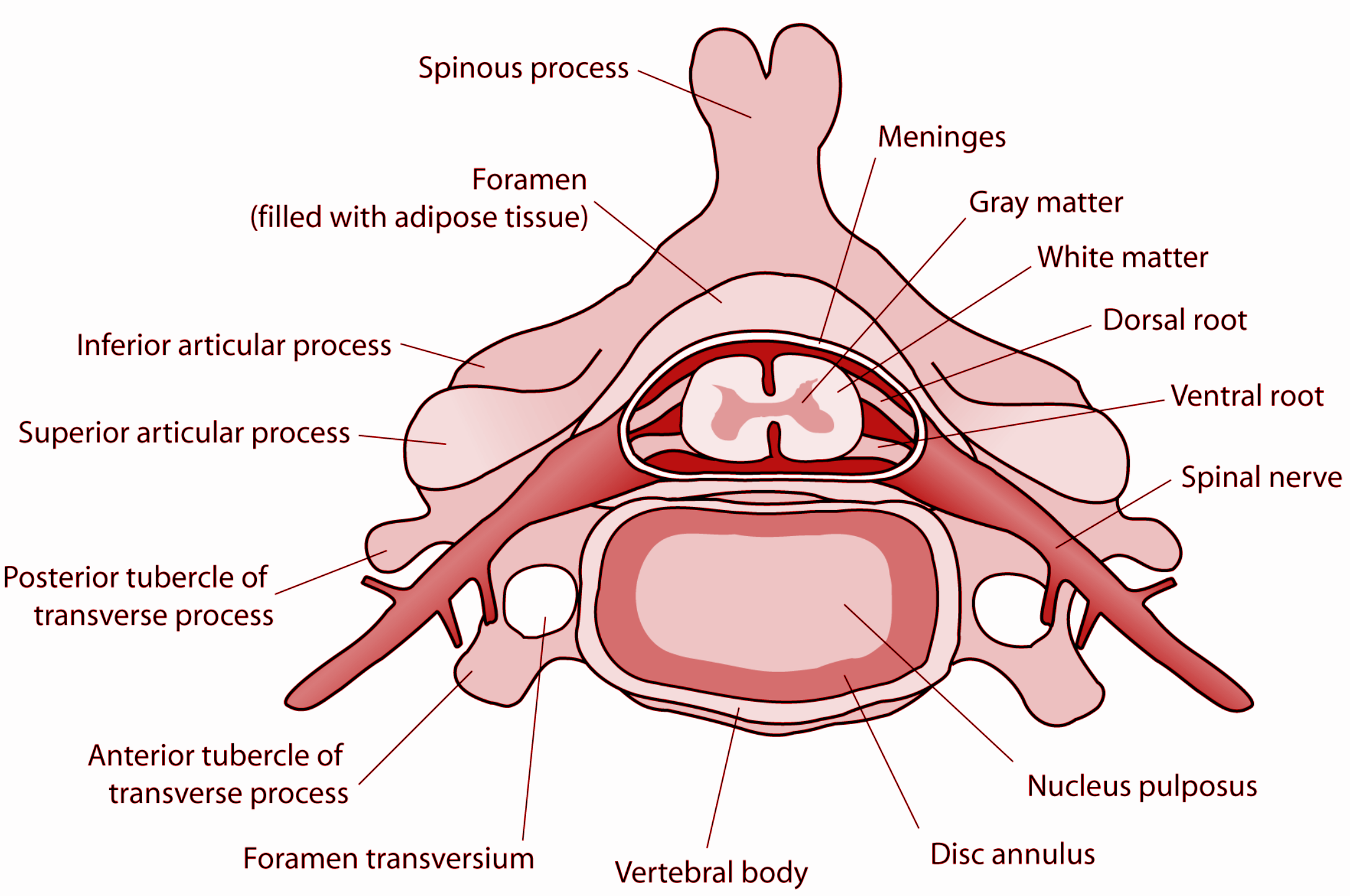
Nucleus pulposus occurs in
(a) Brain
(b) Liver
(c) Kidney
(d) Intervertebral disc
Answer
478.5k+ views
Hint: They are the cartilages whose main function is to allow the movement in the backbone area of the body and also to join their bones together to provide movement which will also protect the backbone from any jerk.
Complete answer:
Nucleus pulposus occurs in the intervertebral disc of the body. It is the inner part of the vertebral disc that is jelly- like in appearance and acts as a shock absorber. It is mainly composed of a large amount of water and collagen fibers that form the network of loosely connected tissues. They help the organism to move and support the body.

- The intervertebral disc is the substance present between the two adjacent vertebrae inside the vertebral column.
- They act as a ligament that keeps the vertebrae in place and forms a symbiosis that helps the vertebrae to move to form a fibrocartilaginous joint.
- The vertebral disc is composed of two parts, the outer part is surrounded by the fibrous tissues while the inner layer is present inside it called the nucleus pulposus.
- The outer fibrous tissue provides strength to the body to withstand even at a greater force and during the process of torsion in certain organisms.
- They protect the vertebral column from any type of damage that may cause it to rupture
- The remains of the notochord are the nucleus pulposus that helps the vertebrae to remain separated and withstand any kind of shock.
- A single intervertebral column is present between each pair of vertebrae except the first pair of vertebrae.
- The function of the nucleus pulposus is to distribute the tension and stress in all the parts of the vertebral column in balance so as to protect them from damage.
So, the correct answer is ‘(d) Intervertebral disc’.
Note: The nucleus pulposus can be regenerated by the cells when they produce a large amount of proteoglycan- rich matrix. The change in nucleus pulposus may cause certain diseases including herniated nucleus pulposus where the nucleus pulposus is forced through the intervertebral disc that leads to the back pain and the irritation in the root nerve.
Complete answer:
Nucleus pulposus occurs in the intervertebral disc of the body. It is the inner part of the vertebral disc that is jelly- like in appearance and acts as a shock absorber. It is mainly composed of a large amount of water and collagen fibers that form the network of loosely connected tissues. They help the organism to move and support the body.

- The intervertebral disc is the substance present between the two adjacent vertebrae inside the vertebral column.
- They act as a ligament that keeps the vertebrae in place and forms a symbiosis that helps the vertebrae to move to form a fibrocartilaginous joint.
- The vertebral disc is composed of two parts, the outer part is surrounded by the fibrous tissues while the inner layer is present inside it called the nucleus pulposus.
- The outer fibrous tissue provides strength to the body to withstand even at a greater force and during the process of torsion in certain organisms.
- They protect the vertebral column from any type of damage that may cause it to rupture
- The remains of the notochord are the nucleus pulposus that helps the vertebrae to remain separated and withstand any kind of shock.
- A single intervertebral column is present between each pair of vertebrae except the first pair of vertebrae.
- The function of the nucleus pulposus is to distribute the tension and stress in all the parts of the vertebral column in balance so as to protect them from damage.
So, the correct answer is ‘(d) Intervertebral disc’.
Note: The nucleus pulposus can be regenerated by the cells when they produce a large amount of proteoglycan- rich matrix. The change in nucleus pulposus may cause certain diseases including herniated nucleus pulposus where the nucleus pulposus is forced through the intervertebral disc that leads to the back pain and the irritation in the root nerve.
Recently Updated Pages
The correct geometry and hybridization for XeF4 are class 11 chemistry CBSE

Water softening by Clarks process uses ACalcium bicarbonate class 11 chemistry CBSE

With reference to graphite and diamond which of the class 11 chemistry CBSE

A certain household has consumed 250 units of energy class 11 physics CBSE

The lightest metal known is A beryllium B lithium C class 11 chemistry CBSE

What is the formula mass of the iodine molecule class 11 chemistry CBSE

Trending doubts
How is phenol converted to salicylic acid class 11 chemistry CBSE

Why was the Vernacular Press Act passed by British class 11 social science CBSE

Arrange Water ethanol and phenol in increasing order class 11 chemistry CBSE

Name the nuclear plant located in Uttar Pradesh class 11 social science CBSE

One Metric ton is equal to kg A 10000 B 1000 C 100 class 11 physics CBSE

What steps did the French revolutionaries take to create class 11 social science CBSE




